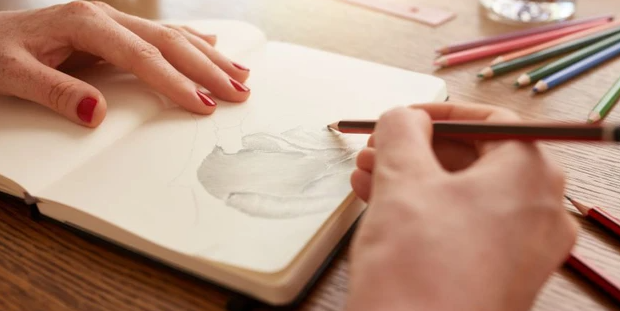Introduction to the Molar Cgt20750 Drawing
Are you ready to unleash your artistic side? Drawing the mollar cgt20750 drawing can be an exciting challenge that not only hones your skills but also enriches your understanding of anatomy and design. Whether you’re a seasoned artist or just starting out, this drawing offers a unique opportunity to explore shapes, shading, and details. Imagine bringing a complex structure like the mollar cgt20750 drawing to life on paper! With some guidance and practice, you’ll soon find yourself creating stunning representations that capture its essence. Let’s dive into everything you need to know about mastering this fascinating drawing!
Materials Needed for the Drawing
To create a stunning mollar cgt20750 drawing, you’ll first need to gather your materials. Start with quality paper that can withstand pencil shading and erasing.
Next, choose a range of pencils. You’ll want anything from hard leads for fine details to softer ones for richer darks. A standard HB pencil is great for outlines, while 2B or 4B works well for depth.
Don’t forget an eraser—both kneaded and regular types are useful. The kneaded eraser helps lift graphite without damaging the paper.
For added texture, consider blending tools like tortillas or stumps. These will help smooth out shadows and give more life to your drawing.
Keep a ruler handy if you need precise lines or measurements in your sketching process. With these materials at hand, you’re ready to dive into creating your Molar CGT20750 masterpiece!
Step-by-Step Guide on How to Draw the Molar Cgt20750
Start by sketching a basic outline of the molar. Use light pencil strokes for easy adjustments. Focus on the overall shape, which is somewhat rectangular with rounded edges.
Next, define the cusps and grooves. Draw three major points at the top where the chewing surfaces are located. Ensure they appear slightly uneven to mimic realism.
Once you have your shapes down, add details like ridges and pits on the surface of the tooth. These features give texture and depth to your drawing.
Now, it’s time to refine your lines. Erase any unnecessary marks while keeping essential outlines intact.
After that, decide on shading techniques—use hatching or cross-hatching for dimensionality—Darken areas under cusps and between grooves for contrast.
Review your work from a distance to spot any imbalances before finalizing details or adding color if desired.
Tips and Tricks for a Realistic and Detailed Drawing
To achieve a realistic and detailed drawing of the Molar CGT20750, pay close attention to light and shadow. Use shading techniques to create depth. This will bring your drawing to life.
Utilize reference images for accuracy. Study these images closely; they offer insight into textures and shapes that enhance realism.
Experiment with different pencil grades. Softer pencils are great for rich shadows, while harder ones help define fine details.
Don’t rush the process—take your time on each section of the tooth. Focus on getting proportions right before adding intricate elements like grooves or highlights.
Consider layering your colors if you’re using colored pencils or markers. Build them up gradually for a more vibrant effect rather than applying thick layers all at once.
Step back from your work periodically. Fresh eyes can reveal areas needing adjustment that you might overlook when too close to the paper.
Common Mistakes to Avoid
When embarking on the mollar cgt20750 drawing, it’s easy to fall into common pitfalls. One of the most frequent mistakes is not paying attention to proportions. Ensure that each part of the molar is accurately sized relative to others for a realistic effect.
Another error is neglecting shading techniques. Proper shading adds depth and dimension, making your drawing more lifelike. Skipping this step can result in a flat appearance.
Many beginners also rush through details like texture or surface imperfections. Take your time with these elements; they are crucial for realism.
Avoid using overly heavy lines at first. Light strokes allow for adjustments as you refine your work. Once satisfied with the overall shape and details, you can solidify lines later without overwhelming your drawing from the start.
Alternative Techniques and Styles for Drawing the Molar Cgt20750
Exploring alternative techniques can elevate your mollar cgt20750 drawing. One approach is to use charcoal for a dramatic effect. The rich blacks and soft smudges create depth, perfect for showcasing the tooth’s contours.
Another method involves digital drawing tools. Software like Procreate or Adobe Illustrator allows for precision and easy adjustments. You can experiment with layers, colors, and textures that traditional mediums may limit.
Consider using mixed media, too. Combining watercolors with ink gives your piece a unique flair while capturing different textures. This technique adds vibrancy and interest to the final artwork.
Try out various styles, such as realism or abstract interpretation. A more stylized version of the molar could emphasize its unique features in an eye-catching way that resonates with viewers on different levels. Explore these methods freely; they might lead you down an unexpected creative path!
Conclusion
Mollar cgt20750 drawing can be a rewarding experience, whether you’re an art enthusiast or just looking to hone your skills. With the right materials and a clear step-by-step approach, you can create an impressive representation of this unique object. Remember that practice makes perfect; don’t hesitate to experiment with different techniques and styles as you develop your artistic voice.
Avoiding common mistakes will help enhance your drawing’s realism, while tips for adding detail will elevate your work further. Whether you stick to traditional methods or venture into alternative techniques, each attempt is a chance to improve and explore new creative possibilities. Embrace the learning process and enjoy every stroke of the pencil as you bring the Molar Cgt20750 to life on paper.




